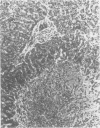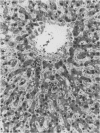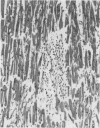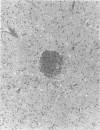Abstract
AIMS: To study the postmortem pathology associated with ring substituted amphetamine (amphetamine derivatives) misuse. METHODS: The postmortem findings in deaths associated with the ring substituted amphetamines 3,4-methylenedioxymethyl-amphetamine (MDMA, ecstasy) and 3,4-methylenedioxyethylamphetamine (MDEA, eve) were studied in seven young white men aged between 20 and 25 years. RESULTS: Striking changes were identified in the liver, which varied from foci of individual cell necrosis to centrilobular necrosis. In one case there was massive hepatic necrosis. Changes consistent with catecholamine induced myocardial damage were seen in five cases. In the brain perivascular haemorrhagic and hypoxic changes were identified in four cases. Overall, the changes in four cases were the same as those reported in heart stroke, although only two cases had a documented history of hyperthermia. Of these four cases, all had changes in their liver, three had changes in their brains, and three in their heart. Of the other three cases, one man died of fulminant liver failure, one of water intoxication and one probably from a cardiac arrhythmia associated with myocardial fibrosis. CONCLUSIONS: These data suggest that there is more than one mechanism of damage in ring substituted amphetamine misuse, injury being caused by hyperthermia in some cases, but with ring substituted amphetamines also possibly having a toxic effect on the liver and other organs in the absence of hyperthermia.
Full text
PDF
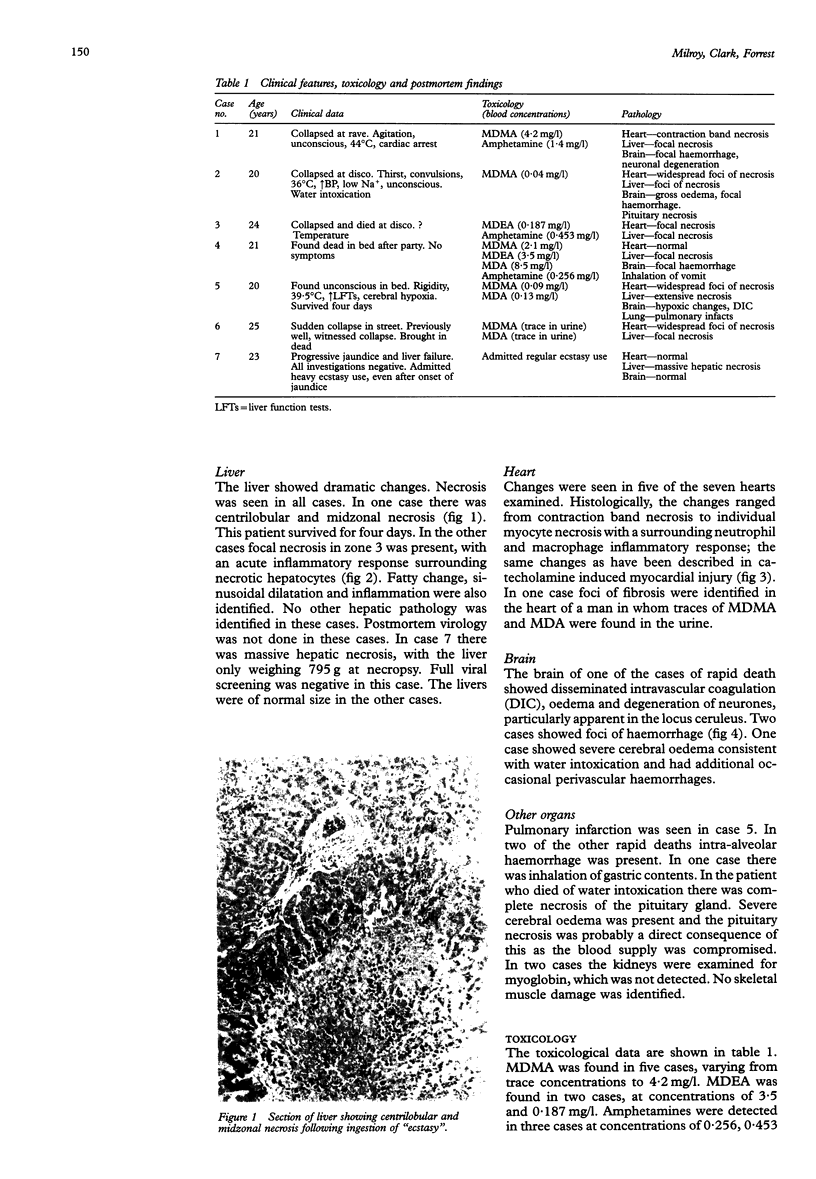


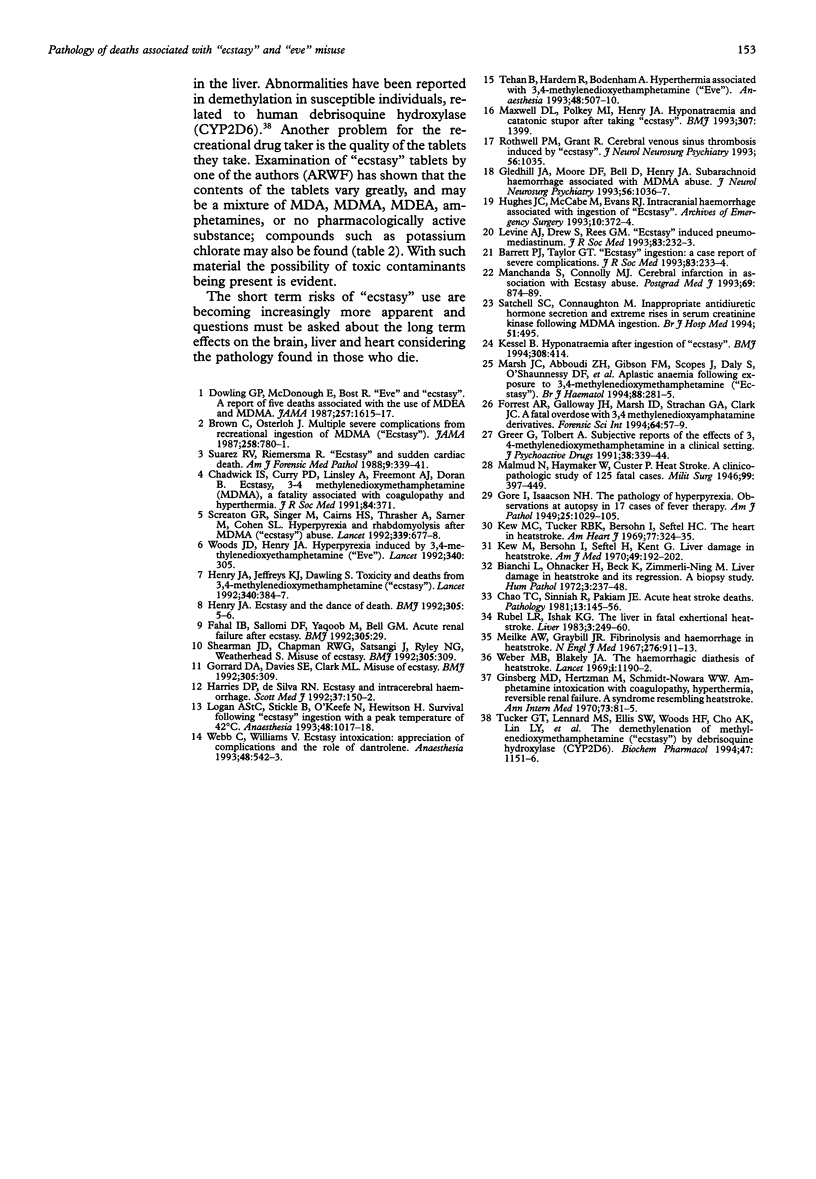
Images in this article
Selected References
These references are in PubMed. This may not be the complete list of references from this article.
- Barrett P. J., Taylor G. T. 'Ecstasy' ingestion: a case report of severe complications. J R Soc Med. 1993 Apr;86(4):233–234. doi: 10.1177/014107689308600420. [DOI] [PMC free article] [PubMed] [Google Scholar]
- Bianchi L., Ohnacker H., Beck K., Zimmerli-Ning M. Liver damage in heatstroke and its regression. A biopsy study. Hum Pathol. 1972 Jun;3(2):237–248. doi: 10.1016/s0046-8177(72)80077-7. [DOI] [PubMed] [Google Scholar]
- Brown C., Osterloh J. Multiple severe complications from recreational ingestion of MDMA ('Ecstasy') JAMA. 1987 Aug 14;258(6):780–781. [PubMed] [Google Scholar]
- Chadwick I. S., Curry P. D., Linsley A., Freemont A. J., Doran B. Ecstasy, 3-4 methylenedioxymethamphetamine (MDMA), a fatality associated with coagulopathy and hyperthermia. J R Soc Med. 1991 Jun;84(6):371–371. doi: 10.1177/014107689108400622. [DOI] [PMC free article] [PubMed] [Google Scholar]
- Chao T. C., Sinniah R., Pakiam J. E. Acute heat stroke deaths. Pathology. 1981 Jan;13(1):145–156. doi: 10.3109/00313028109086837. [DOI] [PubMed] [Google Scholar]
- Dowling G. P., McDonough E. T., 3rd, Bost R. O. 'Eve' and 'Ecstasy'. A report of five deaths associated with the use of MDEA and MDMA. JAMA. 1987 Mar 27;257(12):1615–1617. doi: 10.1001/jama.257.12.1615. [DOI] [PubMed] [Google Scholar]
- Fahal I. H., Sallomi D. F., Yaqoob M., Bell G. M. Acute renal failure after ecstasy. BMJ. 1992 Jul 4;305(6844):29–29. doi: 10.1136/bmj.305.6844.29. [DOI] [PMC free article] [PubMed] [Google Scholar]
- Forrest A. R., Galloway J. H., Marsh I. D., Strachan G. A., Clark J. C. A fatal overdose with 3,4-methylenedioxyamphetamine derivatives. Forensic Sci Int. 1994 Jan;64(1):57–59. doi: 10.1016/0379-0738(94)90242-9. [DOI] [PubMed] [Google Scholar]
- Ginsberg M. D., Hertzman M., Schmidt-Nowara W. W. Amphetamine intoxication with coagulopathy, hyperthermia, and reversible renal failure. A syndrome resembling heatstroke. Ann Intern Med. 1970 Jul;73(1):81–85. doi: 10.7326/0003-4819-73-1-81. [DOI] [PubMed] [Google Scholar]
- Gledhill J. A., Moore D. F., Bell D., Henry J. A. Subarachnoid haemorrhage associated with MDMA abuse. J Neurol Neurosurg Psychiatry. 1993 Sep;56(9):1036–1037. doi: 10.1136/jnnp.56.9.1036. [DOI] [PMC free article] [PubMed] [Google Scholar]
- Gorard D. A., Davies S. E., Clark M. L. Misuse of ecstasy. BMJ. 1992 Aug 1;305(6848):309–309. doi: 10.1136/bmj.305.6848.309-a. [DOI] [PMC free article] [PubMed] [Google Scholar]
- Harries D. P., De Silva R. 'Ecstasy' and intracerebral haemorrhage. Scott Med J. 1992 Oct;37(5):150–152. doi: 10.1177/003693309203700508. [DOI] [PubMed] [Google Scholar]
- Henry J. A. Ecstasy and the dance of death. BMJ. 1992 Jul 4;305(6844):5–6. doi: 10.1136/bmj.305.6844.5. [DOI] [PMC free article] [PubMed] [Google Scholar]
- Henry J. A., Jeffreys K. J., Dawling S. Toxicity and deaths from 3,4-methylenedioxymethamphetamine ("ecstasy") Lancet. 1992 Aug 15;340(8816):384–387. doi: 10.1016/0140-6736(92)91469-o. [DOI] [PubMed] [Google Scholar]
- Hughes J. C., McCabe M., Evans R. J. Intracranial haemorrhage associated with ingestion of 'ecstasy'. Arch Emerg Med. 1993 Dec;10(4):372–374. doi: 10.1136/emj.10.4.372. [DOI] [PMC free article] [PubMed] [Google Scholar]
- Isaacson P. G. Gastrointestinal lymphoma. Hum Pathol. 1994 Oct;25(10):1020–1029. doi: 10.1016/0046-8177(94)90060-4. [DOI] [PubMed] [Google Scholar]
- Kessel B. Hyponatraemia after ingestion of ecstasy. BMJ. 1994 Feb 5;308(6925):414–414. doi: 10.1136/bmj.308.6925.414. [DOI] [PMC free article] [PubMed] [Google Scholar]
- Kew M. C., Tucker R. B., Bersohn I., Seftel H. C. The heart in heatstroke. Am Heart J. 1969 Mar;77(3):324–335. doi: 10.1016/0002-8703(69)90188-4. [DOI] [PubMed] [Google Scholar]
- Kew M., Bersohn I., Seftel H., Kent G. Liver damage in heatstroke. Am J Med. 1970 Aug;49(2):192–202. doi: 10.1016/s0002-9343(70)80075-4. [DOI] [PubMed] [Google Scholar]
- Levine A. J., Drew S., Rees G. M. 'Ecstasy' induced pneumomediastinum. J R Soc Med. 1993 Apr;86(4):232–233. doi: 10.1177/014107689308600419. [DOI] [PMC free article] [PubMed] [Google Scholar]
- Logan A. S., Stickle B., O'Keefe N., Hewitson H. Survival following 'Ecstasy' ingestion with a peak temperature of 42 degrees C. Anaesthesia. 1993 Nov;48(11):1017–1018. [PubMed] [Google Scholar]
- Manchanda S., Connolly M. J. Cerebral infarction in association with Ecstasy abuse. Postgrad Med J. 1993 Nov;69(817):874–875. doi: 10.1136/pgmj.69.817.874. [DOI] [PMC free article] [PubMed] [Google Scholar]
- Marsh J. C., Abboudi Z. H., Gibson F. M., Scopes J., Daly S., O'Shaunnessy D. F., Baughan A. S., Gordon-Smith E. C. Aplastic anaemia following exposure to 3,4-methylenedioxymethamphetamine ('Ecstasy'). Br J Haematol. 1994 Oct;88(2):281–285. doi: 10.1111/j.1365-2141.1994.tb05019.x. [DOI] [PubMed] [Google Scholar]
- Maxwell D. L., Polkey M. I., Henry J. A. Hyponatraemia and catatonic stupor after taking "ecstasy". BMJ. 1993 Nov 27;307(6916):1399–1399. doi: 10.1136/bmj.307.6916.1399. [DOI] [PMC free article] [PubMed] [Google Scholar]
- Meikle A. W., Graybill J. R. Fibrinolysis and hemorrhage in a fatal case of heat stroke . N Engl J Med. 1967 Apr 20;276(16):911–913. doi: 10.1056/NEJM196704202761607. [DOI] [PubMed] [Google Scholar]
- Rothwell P. M., Grant R. Cerebral venous sinus thrombosis induced by 'ecstasy'. J Neurol Neurosurg Psychiatry. 1993 Sep;56(9):1035–1035. doi: 10.1136/jnnp.56.9.1035. [DOI] [PMC free article] [PubMed] [Google Scholar]
- Rubel L. R., Ishak K. G. The liver in fatal exertional heatstroke. Liver. 1983 Aug;3(4):249–260. doi: 10.1111/j.1600-0676.1983.tb00875.x. [DOI] [PubMed] [Google Scholar]
- Satchell S. C., Connaughton M. Inappropriate antidiuretic hormone secretion and extreme rises in serum creatinine kinase following MDMA ingestion. Br J Hosp Med. 1994 May 4;51(9):495–495. [PubMed] [Google Scholar]
- Screaton G. R., Singer M., Cairns H. S., Thrasher A., Sarner M., Cohen S. L. Hyperpyrexia and rhabdomyolysis after MDMA ("ecstasy") abuse. Lancet. 1992 Mar 14;339(8794):677–678. doi: 10.1016/0140-6736(92)90834-p. [DOI] [PubMed] [Google Scholar]
- Shearman J. D., Chapman R. W., Satsangi J., Ryley N. G., Weatherhead S. Misuse of ecstasy. BMJ. 1992 Aug 1;305(6848):309–309. doi: 10.1136/bmj.305.6848.309. [DOI] [PMC free article] [PubMed] [Google Scholar]
- Suarez R. V., Riemersma R. "Ecstasy" and sudden cardiac death. Am J Forensic Med Pathol. 1988 Dec;9(4):339–341. doi: 10.1097/00000433-198812000-00015. [DOI] [PubMed] [Google Scholar]
- Tehan B., Hardern R., Bodenham A. Hyperthermia associated with 3,4-methylenedioxyethamphetamine ('Eve'). Anaesthesia. 1993 Jun;48(6):507–510. doi: 10.1111/j.1365-2044.1993.tb07072.x. [DOI] [PubMed] [Google Scholar]
- Tucker G. T., Lennard M. S., Ellis S. W., Woods H. F., Cho A. K., Lin L. Y., Hiratsuka A., Schmitz D. A., Chu T. Y. The demethylenation of methylenedioxymethamphetamine ("ecstasy") by debrisoquine hydroxylase (CYP2D6). Biochem Pharmacol. 1994 Mar 29;47(7):1151–1156. doi: 10.1016/0006-2952(94)90386-7. [DOI] [PubMed] [Google Scholar]
- Webb C., Williams V. Ecstasy intoxication: appreciation of complications and the role of dantrolene. Anaesthesia. 1993 Jun;48(6):542–543. doi: 10.1111/j.1365-2044.1993.tb07102.x. [DOI] [PubMed] [Google Scholar]
- Weber M. B., Blakely J. A. The haemorrhagic diathesis of heatstroke. A consumption coagulopathy successfully treated with heparin. Lancet. 1969 Jun 14;1(7607):1190–1192. doi: 10.1016/s0140-6736(69)92169-2. [DOI] [PubMed] [Google Scholar]
- Woods J. D., Henry J. A. Hyperpyrexia induced by 3,4-methylenedioxyamphetamine ("Eve") Lancet. 1992 Aug 1;340(8814):305–305. doi: 10.1016/0140-6736(92)92392-s. [DOI] [PubMed] [Google Scholar]



